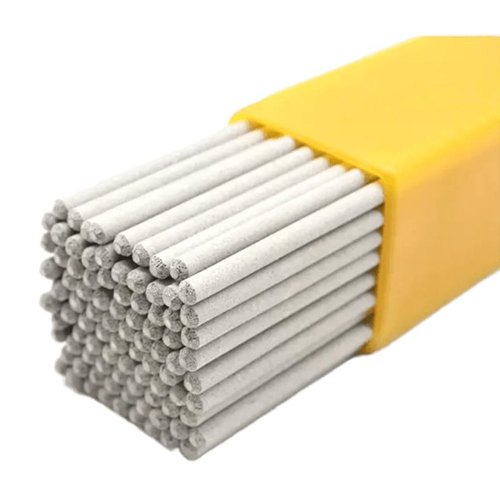CHARACTERISTICS & APPLICATIONS
íshín-316LS has nominal composition (wt. %) of weld metal 18.5 Cr, 12.5 Ni, 2.5 Mo which is the same as E316, except for the carbon content. The 0.04 percent maximum carbon content of weld metal deposited by these electrodes reduces the possibility of intergranular carbide precipitation and thereby increases the resistance to intergranular corrosion without the use of stabilizers such as niobium or titanium.
These electrodes are used principally for welding low-carbon, molybdenum-bearing austenitic alloys. Tests have shown that 0.04 percent carbon limit in the weld metal gives adequate protection against intergranular corrosion in most cases. This low-carbon alloy, however, is not as strong at elevated temperatures as Type E316H. This classification with maximum ferrite content of 2 FN has traditionally been the choice for welding Types 304 and 316 stainless steels for cryogenic service at temperatures down to –269°C.
These electrodes are designed for flat and horizontal fillet welding. In practice, most of these electrodes give higher deposition rates than their all-positional counterparts owing to their thicker coatings that contain higher levels of metal powders. The thicker coating gives larger fillet welds that are typically flat to concave. It also reduces the effects of core wire overheating, making 450 mm long electrodes possible for the larger electrodes, even with stainless steel core wire. Higher currents are usually required to achieve the necessary penetration compared to the all-positional types. The slag system of these electrodes is like those of the – 16 and -17 designations. The resulting slag may be more fluid and even slower freezing than that from -17 electrodes. The -26 electrodes are recommended for welding only in flat and horizontal fillet positions. Out of position welding may be possible with electrode sizes up to 3.2 mm diameter.
Storage and Drying Conditions: Hydrogen can have adverse effects on welds in some steels under certain conditions. One source of this hydrogen is moisture in the electrode coverings. For this reason, the proper storage, treatment, and handling of electrodes are necessary.
Holding Ovens: 125°C–150°C.
Drying Conditions: 250°C–425°C for 1 hour prior to use.
CHEMICAL COMPOSITION OF UNDILUTED WELD
| C | Cr | Ni | Mo | Nb+Ta | Mn | Si | P | S | N | Cu | Others |
| 0.04 | 17.0-20.0 | 11.0-14.0 | 2.0-3.0 | NS | 0.5-2.5 | 1.00 | 0.04 | 0.03 | NS | 0.75 | NS |
Single values are maxima, except where specified otherwise.
ALL-WELD-METAL MECHANICAL PROPERTIES
| Tensile Strength, MPa | Yield Strength, At 0.2% Offset, MPa | Elongation % | Lateral Expansion, mm | Charpy V-Notch Impact at NS°C, Joules |
| 490 | NS | 30 | NS | NS |
Single values are minimal.
ELECTRODE SIZE & WELDING CURRENT (AC and DCEP)
| DIAMETER, mm | LENGTH, mm | Amperes |
| 2.50 | 350 | 65-90 |
| 3.15, 3.20 | 350 | 90-120 |
| 4.00 | 350 | 120-150 |
| 5.00 | 350 | 160-200 |
WARNING: Safety and health information is available from many sources, including, but not limited to Safety and Health Fact Sheets listed in A11.3, ANSI Z49.1 Safety in Welding, Cutting, and Allied Processes published by the American Welding Society, 8669 Doral Blvd., Suite 130, Doral, FL 33166., and applicable federal and state regulations. The Safety and Health Fact Sheets are revised, and additional sheets added periodically.

